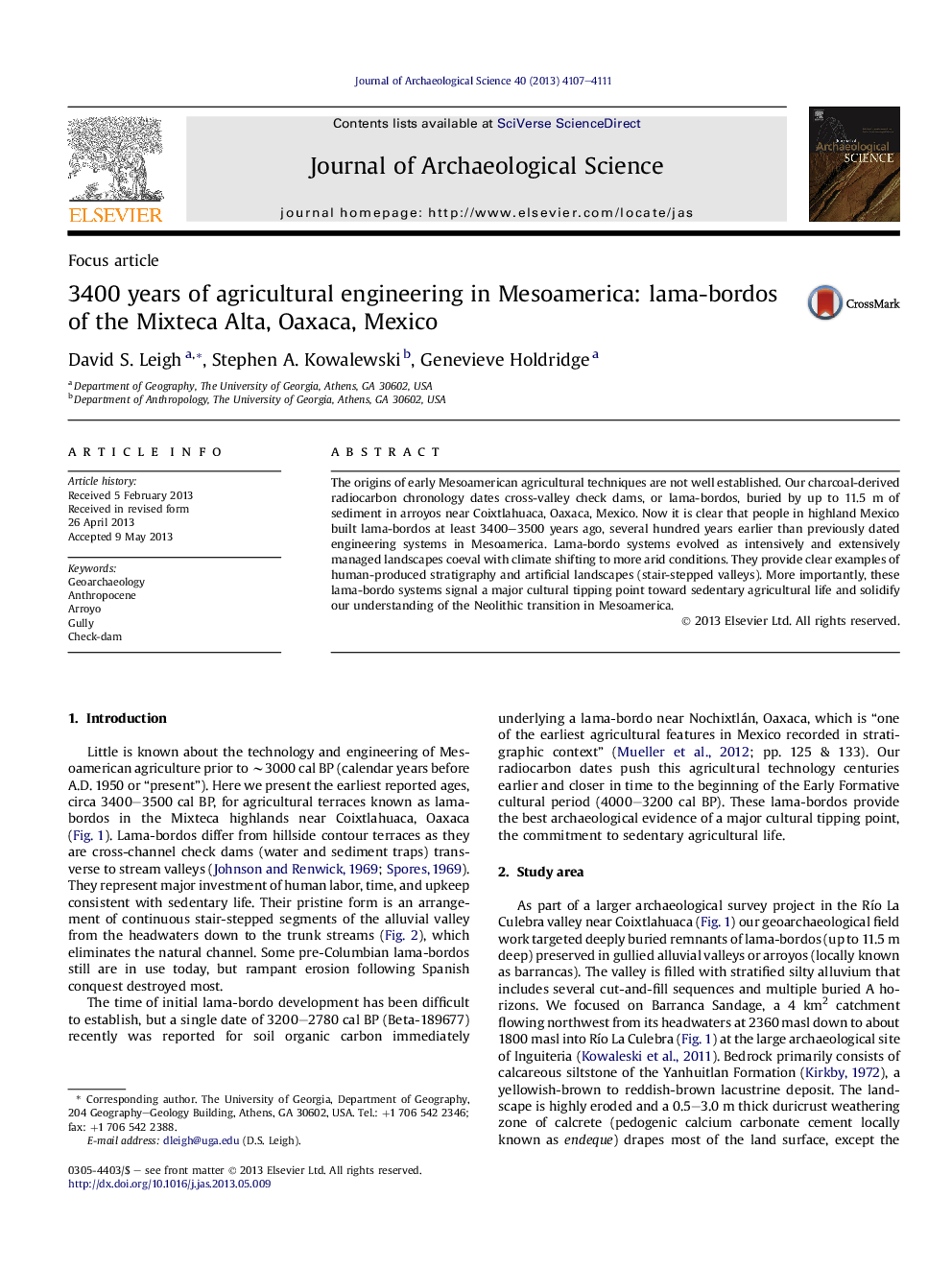| Article ID | Journal | Published Year | Pages | File Type |
|---|---|---|---|---|
| 10498894 | Journal of Archaeological Science | 2013 | 5 Pages |
Abstract
The origins of early Mesoamerican agricultural techniques are not well established. Our charcoal-derived radiocarbon chronology dates cross-valley check dams, or lama-bordos, buried by up to 11.5Â m of sediment in arroyos near Coixtlahuaca, Oaxaca, Mexico. Now it is clear that people in highland Mexico built lama-bordos at least 3400-3500 years ago, several hundred years earlier than previously dated engineering systems in Mesoamerica. Lama-bordo systems evolved as intensively and extensively managed landscapes coeval with climate shifting to more arid conditions. They provide clear examples of human-produced stratigraphy and artificial landscapes (stair-stepped valleys). More importantly, these lama-bordo systems signal a major cultural tipping point toward sedentary agricultural life and solidify our understanding of the Neolithic transition in Mesoamerica.
Related Topics
Physical Sciences and Engineering
Materials Science
Materials Science (General)
Authors
David S. Leigh, Stephen A. Kowalewski, Genevieve Holdridge,
